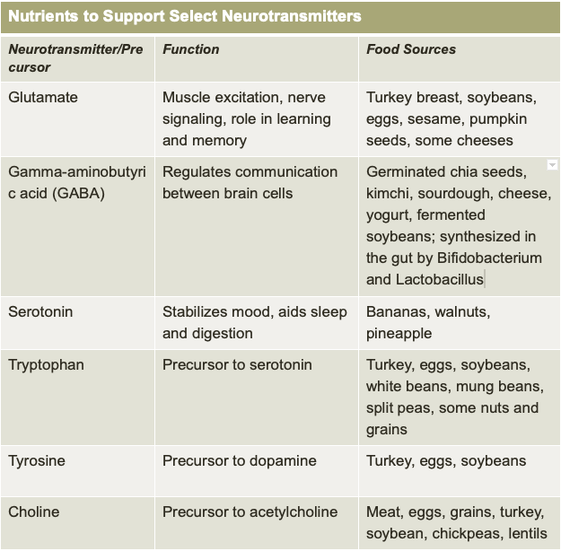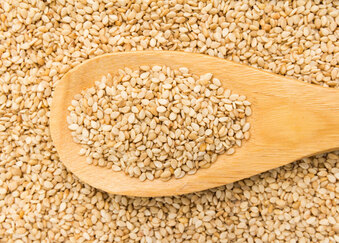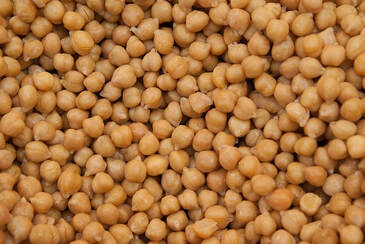|
Irritable bowel syndrome, or IBS, is a class of disorders involving gut-brain interaction that affects up to 1 in 10 Americans. Diagnostic criteria includes abdominal pain at least once per week on average over the past three months associated with changes in stool frequency or form. Symptoms affect the large and small intestines and typically include periodic or chronic bloating, diarrhea, constipation, gassiness, and cramping.The cause of IBS is unknown, however genetics, allergies, infection, lifestyle, and gut microbiota may contribute to IBS and stress and certain foods may trigger symptoms. The large intestine has nerves that communicate with the brain, so stress can stimulate intestinal spasms resulting in pain and discomfort. Specific foods can initiate episodes of IBS, and many people with IBS notice that symptoms worsen after consuming high-fat foods or large meals.
Until recently, the medical advice provided to patients with IBS was to reduce stress and eat more fiber. Research has indicated that IBS can be managed with a focus on diet composition and eating habits, possibly with the assistance of medications, probiotics, and stress management. Consider the following modifications to your diet to provide relief from IBS and prevent future flare-ups.
2 Comments
 According to the Center for Disease Control and Prevention, nutrient dense foods are those that provide an average of 10% or more daily value per 100 calories of 17 nutrients, including potassium, protein, fiber, iron and calcium. While there are numerous fruits and vegetables that are nutrient dense, there are some in particular that are best in the summertime because they also happen to be very hydrating. Citrus fruits and berries are excellent choices for summer snacking. According to CDC’s nutrient density approach, the healthiest of them all is the strawberry, with a nutrient density score of 17.6. According to the FDA, strawberries have more vitamin C than any citrus fruit, and are also rich in potassium and fiber. As an added bonus, strawberries are a good source of flavonoids, a group of phytonutrients linked to reduced risk of diabetes, heart disease, and some cancers. Strawberries are about 92% water, a proportion similar to that of watermelon; and, because of their electrolyte content, strawberries are an ideal source of hydration on warm days. If you aren’t a fan of eating a portion of plain fresh strawberries, the flavor of strawberries is delicious when sliced pieces are added to your ice water. There are also many healthy summer recipes, both sweet and savory, that contain strawberries, such as the Caprese Salad with Strawberries recipe below! Refreshing Caprese Salad with Strawberries 2 pounds fresh strawberries, stemmed and halved 2 cups bite-sized fresh mozzarella balls (Bocconcini), drained and halved 2 tablespoons extra virgin olive oil 1/3 cup balsamic vinegar 3-4 fresh basil leaves, finely diced Salt, pepper to taste In medium sized bowl, toss strawberries and mozzarella balls with olive oil. Season mixture with salt and pepper. Add basil and toss again. Drizzle balsamic syrup over and around salad. Grind more pepper on top and serve. References:
A healthy diet takes planning, time, and effort. Having the right foods available when you need them is important for dancers with limited time and intense training schedules. Here are some nutritious food staples recommended for every dancers' kitchen.
Stress is a physiological condition associated with disorders of the nervous, endocrine, and immune systems. Uncovering natural remedies to combat stress continues to be a significant area of scientific research. In traditional Chinese Medicine known as Ayurveda, consumption of adaptogenic herbs is common practice to improve the body’s ability to adjust to exposures such as extreme temperatures, loud noise, strenuous physical exertion, chemical pollutants, and to help maintain cognitive function, blood glucose, lipid levels and blood pressure. Adaptogens are naturally occurring plant compounds or extracts known to exhibit protection against stress, fatigue, anxiety, and depression. According to Selye’s theory (Selye, 1950) the stress response and general adaptation syndrome includes three phases: alarm, resistance, and exhaustion. Recent pharmacological studies of individual adaptogens provide rationale to their effects at the molecular level, indicating several mechanisms of action that help the body maintain equilibrium. However, adaptogens supposedly act non-specifically, and may activate certain energy-producing chemical receptors and deactivate others to prevent overreaction to stress messengers. Combinations of adaptogenic plants may offer unique effects due to their synergistic interactions in organisms which are not achieved by isolated extracts or supplements of individual adaptogens.
The chemical compounds known as adaptogens are typically phenolics or triterpenoids. Phenolics are structurally similar to catecholamines, which activate the stress system in the early stages of stress response. Triterpenoids resemble the corticosteroids that act as stress hormones in deactivation of the stress system. Adaptogens often are included alone or in combinations in bottled beverages, herbal teas, smoothies, plant-based protein powders, and supplements. The following are adaptogens that have demonstrated beneficial health effects:
References: Enyeart JA, Liu H, Enyeart JJ. Curcumin inhibits ACTH- and angiotensin II-stimulated cortisol secretion and Ca(v)3.2 current. J Nat Prod. 2009;72(8):1533-1537. Jamshidi N, Cohen MM. The clinical efficacy and safety of tulsi in humans: a systematic review of the literature. Evid Based Complement Alternat Med. 2017;2017:9217567. Lee S, Rhee DK. Effects of ginseng on stress-related depression, anxiety, and the hypothalamic-pituitary-adrenal axis. J Ginseng Res. 2017;41(4):589-594. Liao, L. Y., He, Y. F., Li, L., Meng, H., Dong, Y. M., Yi, F., & Xiao, P. G. (2018). A preliminary review of studies on adaptogens: comparison of their bioactivity in TCM with that of ginseng-like herbs used worldwide. Chinese medicine, 13, 57. https://doi.org/10.1186/s13020-018-0214-9. Panossian, A., & Wikman, G. (2010). Effects of Adaptogens on the Central Nervous System and the Molecular Mechanisms Associated with Their Stress-Protective Activity. Pharmaceuticals (Basel, Switzerland), 3(1), 188–224. https://doi.org/10.3390/ph301018 Selye H. Stress. Acta Medical Publisher; Montreal, Canada: 1950. Stress is the tension felt when faced with a new, unpleasant, or threatening situation. The hormone surge we experience during stress produces an automatic physical reaction as well an emotional response that can be controlled and managed. The physical signs of stress include increased heart rate, perspiration, headaches, appetite changes, dry mouth, frequent urination, and diarrhea or vomiting. The emotions that accompany stress are typically anxiety, irritability, and fearfulness which often lead to impulsiveness, increased use of drugs or alcohol, and overeating. It is very important to find alternative coping strategies for stress that aren’t harmful to your health and performance. Taking care of your body and mind with adequate sleep and proper nourishment are critical. If overeating during stress is an issue for you, it is also helpful to establish an emotional outlet other than food. Fueling your body at regular intervals with balanced meals and snacks can often prevent the urge to overeat, even during stress. There are a number of nutrients related to brain function, including vitamin B12, B6, and folate. Some good sources of B12 are beef, fish, shellfish, dairy, and fortified grains. Vitamin B6 can be found in meats, whole-grains, vegetables, nuts, and bananas. Dark leafy vegetables, okra, asparagus, fruits, beans, yeast, mushrooms, orange juice, and tomato juice, and fortified grains are good sources of folate. With the wide array of food sources, a balanced diet generally provides adequate quantities of these nutrients, so it is only necessary to supplement if a deficiency exists. The essential omega-3 fatty acids are also necessary for mental and physical health due to their role in regulating inflammation and interacting with mood-related molecules in the brain. Food sources of omega-3 fats include fatty fish, flax and hemp seeds, walnuts, and canola oil. Additionally, there are amino acids and other dietary components that serve as precursors for neurotransmitters that function in mood stabilization, feelings of pleasure, learning and memory. The table below outlines the functions and food sources of some relevant examples. With adequate intake of high-quality proteins and/or a variety of seeds and legumes, adequate intakes of these dietary components can be achieved. It is important to recognize that a lack of the precursors needed to synthesize neurotransmitters can result in altered mood and poor coping skills. Consider integrating food sources of these neurotransmitter precursors, B vitamins, and omega-3 fatty acids to promote mental stability and wellness, even during the most stressful of times! References:
The VITamin D and OmegA-3 TriaL-Depression Endpoint Prevention (VITAL-DEP): Rationale and design of a large-scale ancillary study evaluating vitamin D and marine omega-3 fatty acid supplements for prevention of late-life depression. Contemporary Clinical Trials, May 2018. Haggerty, J. (2020). Vitamins for Bipolar Disorder. Psych Central. Retrieved on October 8, 2020, from https://psychcentral.com/lib/vitamins-for-bipolar-disorder/ Anemia is a common blood disorder in which the body lacks adequate red blood cells to carry oxygen to tissues. The reduced oxygen delivery results in fatigue and weakness, and can severely interfere with exercise capacity and performance. Causes of anemia include inadequate dietary intake, poor absorption of nutrients, blood disorders, or lack of red blood cell production from the bone marrow. Nutritional anemias are usually detected with blood tests that assess the size and number of red blood cells.
Symptoms of anemia include:
Iron is important at any age, but particularly during stages of rapid growth. The high demands of dance training make dancers susceptible to iron deficiency because iron is lost in sweat. Menstruating females are at additionally elevated risk of developing anemia. The average adolescent should consume 6-8 mg of iron each day and dancers and athletes should aim for 9-12 mg per day to help distribute additional oxygen to working muscles and account for any iron that is lost through sweat. The second and third most common nutritional anemias are related to folate and vitamin B12. Vitamin B12 deficiency anemia is unique in that it causes neurological problems and can take years of inadequate supply before symptoms develop. Inadequate levels of B12 are sometimes caused by poor absorption due to a lack of intrinsic factor (the protein that transports B12 to its absorption site in the gut) or a stomach disease. Folate deficiency manifests quickly and is typically a result of a poor diet or alcohol abuse. Folate needs are approximately 200-400 mcg/day and needs increase to 500-800 mcg/day during pregnancy and breastfeeding. Deficiencies of copper, zinc, and vitamins C, A, and B6 can also contribute to anemias. Eating a balanced diet can help you avoid both iron and vitamin-deficiency anemias. There are two kinds of iron found in foods. Iron that is found in animal products (e.g., beef, chicken, eggs) is called heme iron, and the body can absorb 15-18% of heme iron. In contrast, the body only absorbs approximately 5% of non-heme iron, which is found in plant foods such as grains, dark leafy greens, dried fruits, and nuts. Vitamin B-12 is found in meat and dairy. Citrus, green leafy vegetables and legumes are rich in folic acid. A daily multivitamin can also help fill in any gaps in nutrient intakes from food and help prevent nutritional anemias. Be aware that iron supplements can result in toxic levels of the mineral and should only be used if instructed by a physician. References: John Beard, Brian Tobin, Iron status and exercise, The American Journal of Clinical Nutrition, Volume 72, Issue 2, August 2000, Pages 594S–597S, https://doi.org/10.1093/ajcn/72.2.594S Faramarz Naeim, Chapter 23 - Disorder of Red Blood Cells: Anemias, Editor(s): Faramarz Naeim, P. Nagesh Rao, Wayne W. Grody, Hematopathology, Academic Press, 2008, Pages 529-565, ISBN 9780123706072, https://doi.org/10.1016/B978-0-12-370607-2.00023-5. Research continues to shed light on the health benefits of nuts and seeds. Flaxseeds, chia seeds, and sunflower seeds are well-known options, but there are several lesser-known varieties of readily available seeds with potential health effects.
General Characteristics of Seeds Seeds contain the embryo of future plants. To support their development from embryo to plant, seeds are endowed with ample energy and nutrients. This efficient packaging makes seeds calorie dense, so it is important to be aware of appropriate portion sizes when eating seeds as a snack or ingredient. Unique nutrition profiles exist for different seed varieties, therefore, including a diverse array of seeds in your diet can promote health. Seeds are typically a source of protein, unsaturated fats, minerals, and phytonutrients. For individuals with nut allergies, seeds and seed butters offer excellent substitutes! Consider trying one or all of these tasty and nutritious superstar seeds: Sesame seeds are a good source of fiber, which not only supports digestive health but may play a role in reducing risk of obesity, type 2 diabetes, certain cancers, and heart disease. Some studies indicate that regular consumption of sesame seeds may help reduce cholesterol and triglycerides. Sesame seeds also provide phytonutrients (lignans and phytosterols) that may have cholesterol-lowering effects. These tiny seeds supply 5 grams of protein per 3-Tbsp serving and the micronutrients B-vitamins, iron, zinc and copper. Unhulled sesame seeds are especially rich in calcium, a nutrient vital to bone health. Try adding sesame seeds to cereal, stir-fries or steamed veggies, smoothies, or salad dressings. Check out the Sesame Spring Salad recipe for another delicious idea! Pumpkin seeds contain a range of beneficial nutrients, including sterols, magnesium, and polyunsaturated fatty acids. Research indicates that the nutrients in pumpkin seeds may protect against type 2 diabetes and heart disease as well as promote bone health. Pumpkin seeds are a rich source of the amino acid tryptophan, which the body converts into serotonin, a neurotransmitter that promotes relaxation. Pumpkin seeds are a great snack and add crunch and taste to recipes. Top a salad with pumpkin seeds or make homemade pumpkin seed butter by blending whole, raw pumpkin seeds in a food processor. Tomato seeds may be more difficult to digest than most seeds, but they are worth the trouble since they provide a healthy dose of vitamins A and C, potassium and fiber. The seeds also contain lycopene, a phytonutrient known to reduce cancer risk; cooking helps activate lycopene in tomato seeds. The seeds are often consumed dried, but can be enjoyed in tomato sauces or as part of whole tomatoes. References: Carolina Alves Cardoso, Gláucia Maria Moraes de Oliveira, Luciana de Almeida Vittori Gouveia, Annie Seixas Bello Moreira & Glorimar Rosa (2018) The effect of dietary intake of sesame (Sesamumindicum L.) derivatives related to the lipid profile and blood pressure: A systematic review, Critical Reviews in Food Science and Nutrition, 58:1, 116-125, DOI: 10.1080/10408398.2015.1137858 González, Mónica, M. Carmen Cid, and M. Gloria Lobo. "Usage of tomato (Lycopersicum esculentum Mill.) seeds in health." Nuts and seeds in health and disease prevention. Academic Press, 2011. 1123-1132. Sesame Spring Salad 1 pound fresh asparagus, trimmed and cut into 2-inch pieces 7 radishes, thinly sliced 2 tablespoons sesame seeds Dressing: 2 tablespoons olive oil 2 tablespoons thinly sliced green onion 1 tablespoon white wine vinegar 1 tablespoon lemon juice 2 teaspoons honey 1 teaspoon Dijon mustard 1/4 teaspoon garlic powder 1/4 teaspoon grated lemon zest 1/4 teaspoon pepper In a large saucepan, bring 6 cups of water to a boil. Add asparagus; cover and boil for 3 minutes. Drain and immediately place asparagus in ice water. Drain and pat dry. Transfer to a large bowl; add radishes and sesame seeds. Place dressing ingredients in a jar with a tight-fitting lid; shake well. Pour over salad; toss to coat. Inflammation is the body’s normal response to promote healing when the body is fighting infection related to injury, wounds, allergens, toxins, or infection. Typical signs of inflammation include swelling, pain, and redness. In contrast, signs of inflammation may not be apparent with chronic inflammation. Chronic inflammation is typically caused by excess body fat or immune dysfunction. While acute inflammation promotes healing, chronic inflammation can result in DNA damage and increase cancer risk.
Despite the numerous “anti-inflammatory diets” promoted online, research is barely emerging in regards to diet and inflammation. So far, scientific studies indicate that consuming a variety of nutritious foods may help reduce inflammation and keep chronic inflammation at bay. Foods that enhance immune function are also important in fighting inflammation. Here is what we know thus far about foods and inflammation:
Tips for reducing inflammation:
In addition to a healthy diet, inflammation can be reduced by getting adequate sleep, remaining physically active most days of the week, and maintaining a healthy weight. Dancers train vigorously and encounter intense competition when trying to achieve peak potential. In an attempt to excel, it is tempting to experiment with dietary supplements. Although these supplements claim to improve strength, weight management, and agility, most do not live up to their claims.
Although the U.S. Food and Drug Administration regulates dietary supplements, the process is different than the regulation of drugs and conventional foods. Manufacturers are responsible for ensuring their products are reasonably safe and not misleading, but are not required to show evidence of supplement effectiveness prior to marketing or sale. Organizations such as the US Pharmacopeia or NSF International test supplements for purity Looking for their label on a supplement indicates at least some standards have been met. Nontheless, evidence is usually lacking or conflicting, supplements are expensive, and side effects are common. As an alternative, a balanced diet can provide the nutrients you need for overall health and peak performance. Foods can provide many of the substances found in popular supplements, for example: Creatine - produced naturally in our muscles for energy production and also found in fish and meat. Creatine supplements are taken to increase exercise intensity and improve strength and muscle gains. Results tend to vary greatly depending on the study and particular athletic event. Branched-Chain Amino Acids (BCAAs) - leucine, isoleucine, and valine are amino acids found in protein-rich foods. BCAAs are often taken to delay fatigue and boost muscle growth, but studies are inconclusive regarding the effectiveness of taking BCAA supplements for performance. Fish, chicken, eggs, tofu and dairy are great sources of BCAAs. Chromium Picolinate - a supplement used for weight loss or muscle building and a naturally occurring mineral found in fruits and vegetables, and whole grains. Supplement doses may cause oxidative damage and can potentially interfere with iron functions in the body. Include sources of the mineral in the diet, but supplementation is not recommended. Collagen and Bone Broth - collagen is a protein needed for rebuilding bone, skin, and connective tissue. It is present in many high-protein foods that are also rich in minerals and contribute flavor and satisfaction to meals. Collagen and bone broth may be useful when solid foods are being avoided due to surgery or illness, but are not necessarily more nutritious than high protein whole foods. It is also important to note that bone broth and collagen water can be high in sodium, so if using for a soup or stew, opt for a low-sodium broth or stock. You will still obtain the protein and nutrients without consuming excessive sodium, which can contribute to dehydration and high blood pressure. While supplement companies may provide interesting information about their products, it's best to take a balanced approach and review unbiased sources as well. You can find reliable information about dietary supplements from trusted online resources, such as the National Institute of Health’s Office of Dietary Supplements. For more information, consult a registered dietitian to assess your individual needs. The autumn season is upon us, bringing cooler temperatures, holiday traditions, and countless hours of Nutcracker rehearsal. For dancers, this time of year can be busier than ever, contributing to fatigue and susceptibility to illness. Good nutrition is especially important in the months ahead to keep you healthy through the season. We hope an easy and nourishing recipe idea will help - this complete meal can be prepared ahead, is portable, and delicious.
Ingredients:
|
CategoriesAll Cross Training Injury Prevention Nutrition Recipes Wellness Archives
October 2021
|



 RSS Feed
RSS Feed